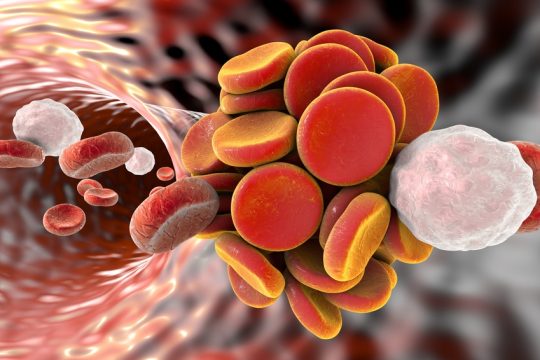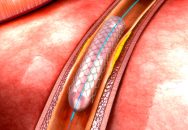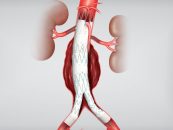Peripheral artery disease (PAD) is no longer a systemic manifestation of atherosclerosis. In fact, 2 in 3 people with PAD have concomitant heart disease, and 1 in 3 people has concomitant PAD. To understand the real dimension of this problem, we should know that PAD patients have 60% more risk of acute myocardial infarction…
Common Femoral PCI Becomes a Valid Alternative
Gentileza del Dr. Carlos Fava. The common femoral artery has always been treated with surgery. Thanks to the development of new generation stents and the advancement of percutaneous intervention, common femoral lesions are currently being treated with PCI. However, data on the safety of PCI vs. surgery, remain unavailable. The TECCO is multicenter study, randomized…
Different Techniques for the Improvement of Outcomes in Intermittent Claudication
Peripheral vascular diseases affect over 20% of the population and can affect up to 30% of people with cardiovascular risk factors. The most important treatment points include modification of risk factors, exercise, optimal medical treatment, and timely revascularization. Given its lower risk of peri-procedural complications (when compared to surgery), endovascular therapy is generally the first…
SOLACI CACI 2017 | Tipo II Endoleaks: Tratamiento obligatorio o un miedo infundado
Read articles on the main presentations of the second day of SOLACI-CACI 2017 Congress. See the presentation by Dr. Hugo Londero, entitled “Tipo II Endoleaks: Tratamiento obligatorio o un miedo infundado”. We are interested in your opinion. Please, leave your comments, thoughts, questions, etc., below. They will be most welcome.
Statin Pre-Treatment for the Prevention of Peri-Procedural Events in Carotid Artery Stenting
Recent randomized studies have shown that the rates of combined peri-procedural events for carotid artery stenting and carotid endarterectomy are similar. While the final numbers are similar, the actual events are different: more infarction events for endarterectomy and more stroke (particularly minor stroke) events for carotid artery stenting. The reduction of these rates of stroke has been the aim of…
Risk of spinal cord infarction in aortic aneurysm repair
Spinal Cord infarction represents roughly 1% of all strokes and can lead to severe impairment, like paraplegia or quadriplegia. Aortic endovascular and surgical repair of aortic aneurysms or dissections could result in spinal cord infarction, because the vascular supply of the spinal cord largely originates directly from the aorta. Spinal cord ischemia (SCI) rate in patients undergoing aortic repair varies depending on the…
Protection Systems Reduce Stroke and Mortality in Carotid Artery Stenting
So far, the main controlled randomized studies have almost exclusively been aimed at comparing the efficacy and safety of carotid artery stenting vs. endarterectomy. Almost all of them have left at operator discretion the choice of the devices to be used during the procedure, which is why there is few direct information to help us…
Critical ischemia in the lower limbs: Frequent Readmissions show the magnitude of this problem
Readmissions at 6 months in patients with critical ischemia in the lower limbs occur in about 50% of all cases and most of them are unplanned. This truly alarming number is cause for further concern when taking into account that only part of these readmissions are related to vascular problems. Many are caused by comorbidities…
Early Endarterectomy Seems Superior to Carotid Stenting in Symptomatic Patients
Patients with symptomatic stenosis of the internal carotid artery benefit from early intervention. The challenge lies in what intervention to choose. Most studies comparing endarterectomy to carotid stenting are fairly heterogeneous as regards timing of intervention. This element is key to comparing between procedures, since there is no doubt timing will directly affect results. …
Nearly half of interventional cardiologists may have pre-cataract lesions
This statement is based on eye exams conducted during the last SCAI meeting (Society for Cardiovascular Angiography and Interventions), where 47% of evaluated operators had radiation related lesions in their crystalline. In time, these might turn into cataract. Studies on astronauts and Chernobyl survivors have shown a clear association between ionizing radiation and crystalline damage,…
Carotid stenting or endarterectomy? considering vascular anatomy…
Complex vascular anatomy could increase the risk of periprocedural stroke during carotid artery stenting (CAS). However, no randomize study has provided evidence showing this potential difficulty should inform the choice between carotid stenting and endarterectomy. This study included 184 patients with symptomatic lesions of the internal carotid randomized to CAS vs. endarterectomy in the context…










